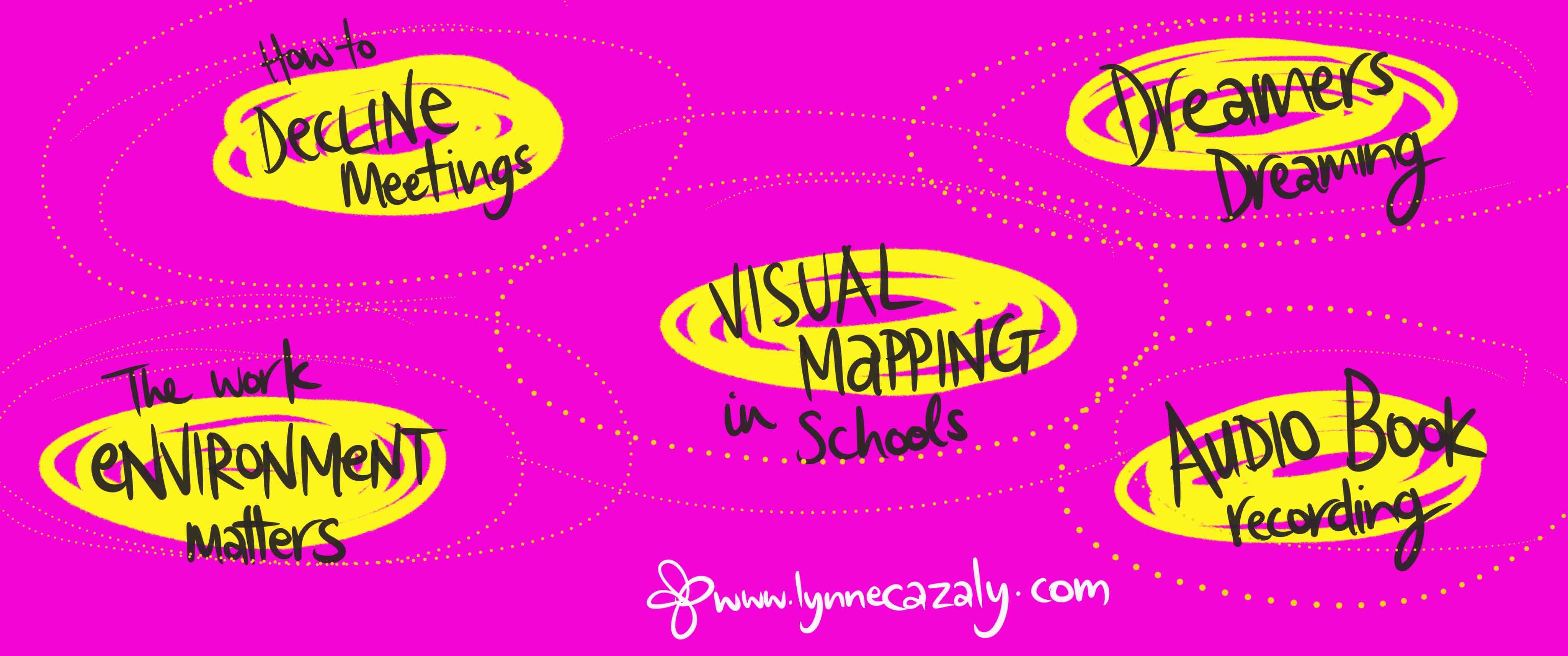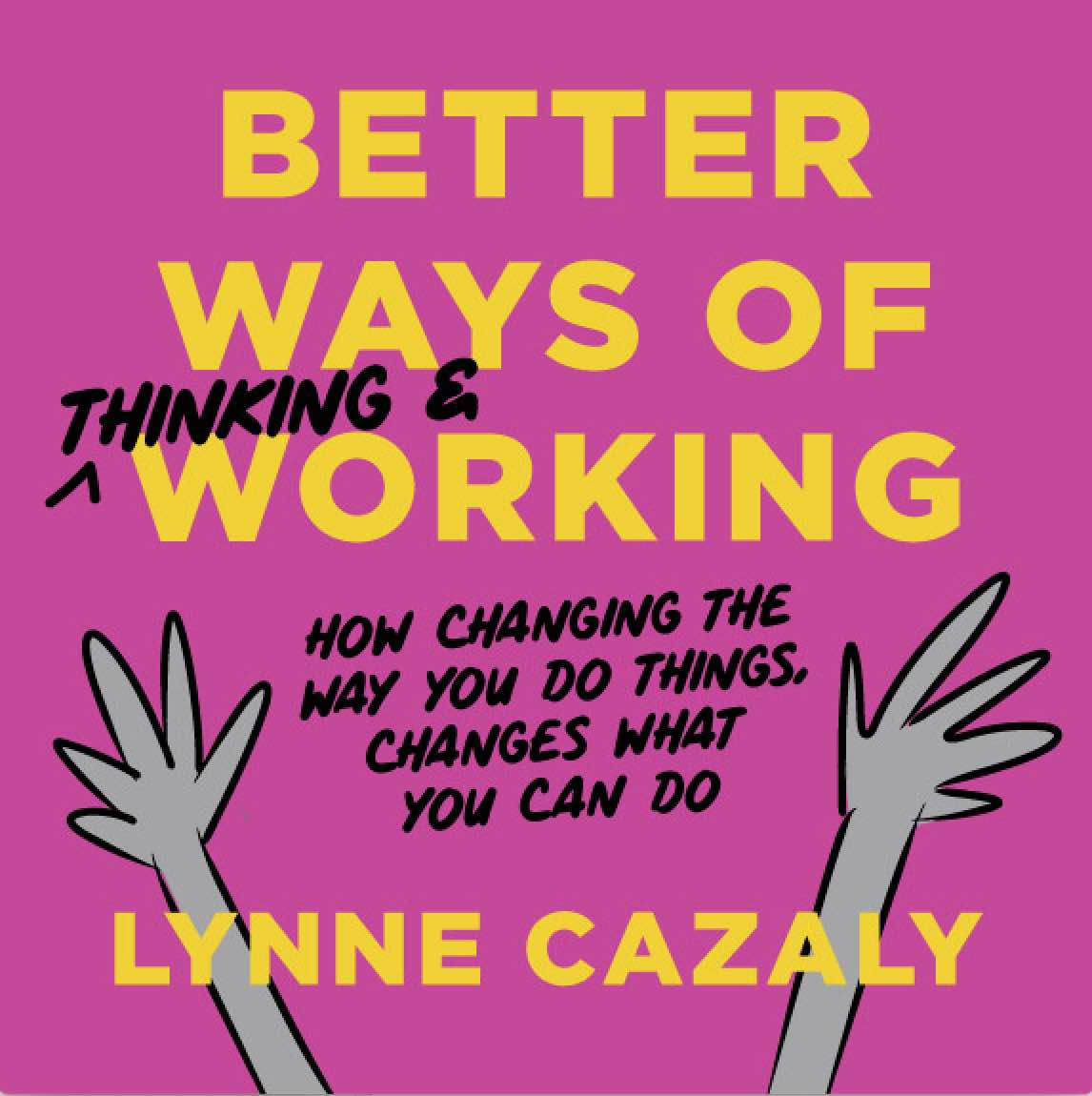Creative tools / Beyond the blah blah / Atlassian community event / Ultimate skills workshop / Is it information or consultation?
 Thursday, September 5, 2024 at 5:51PM
Thursday, September 5, 2024 at 5:51PM Cut through the blah blah
It's a question we can wonder - how do we grab someone's attention or alert them to important information, how do we cut through all of the noise and information we're overloaded with.
If you've seen any of my 'stuff' you'll know I use visuals as a clever tool; for myself and my own thinking and for engaging, communicating and collaborating with others.
Oh, and it's a great influence tool too!
Atlassian community - Melbourne
Join me at the next community event in Melbourne on July 24. I’ll speak about information overload and cognitive load coping as a modern way of working. The agenda is stacked with clever - not to be missed. Register here
4 of my creative tools
This article prompted me to share some more insight about my creative processes.
This is a little more about the art we do ourselves and it doesn’t have to be that paint/draw/clay art you might think about when you see the word ‘art’.
Here are 4 ways I use art and creativity in my life and I know these help me feel better, get me through the shitty tough times in life (cancer, covid, grief), inspire and yet relax me, and give me ideas out of the … nowhere!!
Here we go :
1. SKETCHING and DOODLING
If you’ve seen my presentations, read my books, been in my workshops or read my posts you’ll see I use visuals. From originally using marker + paper 10 years ago, I’ve more regularly used an iPad + Pencil and many different apps. I make visuals for purposeful communication but also like ‘farting around’ 🤪 to see what I can do. Not trying to be perfect; just exploring and wondering. I'm running a skills workshop on this.
2. IMPROVISATION
For many years I’ve been a fan, audience member, student and now performer in shows with Impro Melbourne. There’s comedy improv we likely know but there’s also the learning and unleashing and making up stories improv. The spontaneity, narrative, stories, word play, characters and communication that improv gives me is multi-player, multi-level and multi-world stuff! There’s so much to learn yet it’s such a playful and creative art. I’m better with improv in my life and I feel blah and meh when it’s not part of my art.
3. WRITING
Yes I’ve written books, posts and blogs and some have called me ‘a machine’. But it is also creativity. I have a thought — oh my, lots and lots of thoughts — and I explore the thought with the written word. Are you imagining me sitting diligently at my laptop? No. I’m messy scribbling things in a journal, onto sticky notes all over the dining table, into a notes app. Anywhere. I love thinking deeply about things and writing with a marker from Muji and any paper or my digital device/s whether in a notes app or via voice to text.
4. FIBRE ARTS
This is my most recent creative arting. I’ve done a few basket weaving workshops and they’re wonderful but too small, constrained, prescriptive and ‘do it like this’.
I love the materials — leaves, vines, palms, sticks sticks give me sticks - I stop the car to ‘pick up sticks’ and add to my growing collection. Wonderfully surprising to me is how this art is evolving - I will be having an exhibition 7-27 October 2024 in Melbourne at Gasworks Arts Park in Port Melbourne. Details to come. I have more sticks to collect and things to make.
So there are 4 of my creative arts that mean I am a human and not a machine. That I think deeply, care even deeper and want to feel good about myself in this world like the rest of us.
Art is an essential.
Let me know, do you art, and what do you do?
And here's the article that inspired my thoughts...
Invited to a consultation -- but it was just more information
You know all of those consultations and conversations - promoted that way - but in reality, when we're there in the meeting, in the workshop, it's just more information?
If we're leading the consultation or meeting, we may not know how best to explain which pieces truly are for consultation and which bits are already set in stone.
We might fear the tension or conflict of people annoyed that they didn't get a say in a process.
Or we might ask for input secretly knowing nothing they say is going to make a shred of difference.
Sadly, then, we 'dress up' an information dump as consultation.
People give their thoughts, ideas and opinions and are of course annoyed when none of them are really recognised, acted on or implemented.
It's a modern day work pattern and it wastes plenty of time, effort, energy and ... performance theatre. It's also a part of the cynical cycle where we can't be bothered contributing to a consultation because ... 'well nothing ever happened with what we said anyway".
You can hear the cynicism and feel the defeatist feelings.
Check now:
- Where and when are you planning on consulting with people in your business?
- And exactly which pieces of information are you going to consult with them on?
If there's plenty of informing or information dumping on them, choose other ways than the valuable real time face-to-face meeting or workshop.
Make a video! A short one.
Go more asynchronous rather than a synchronous meeting.
And most of all, don't dress up an information session as consultation or worse... collaboration!






















